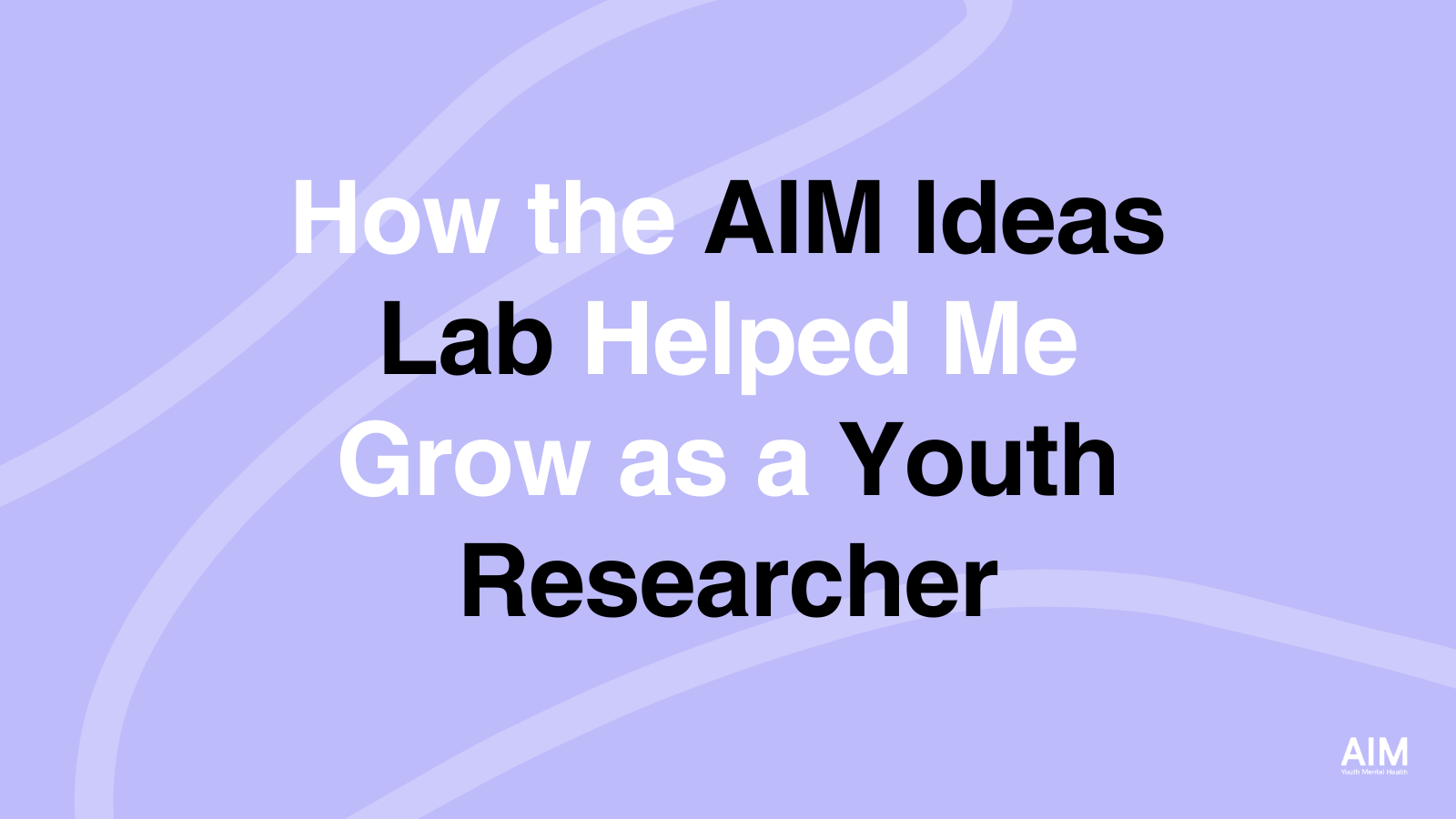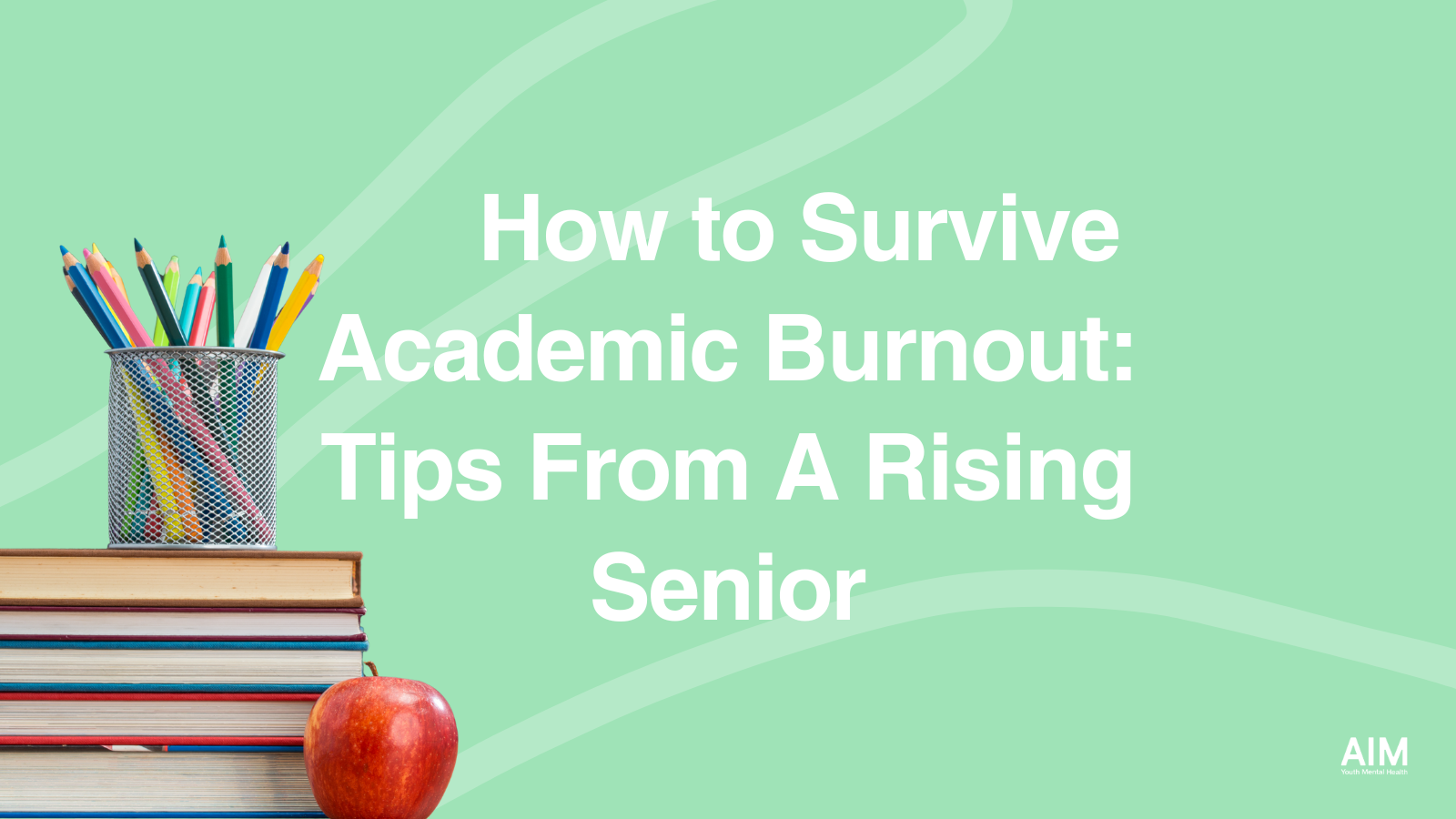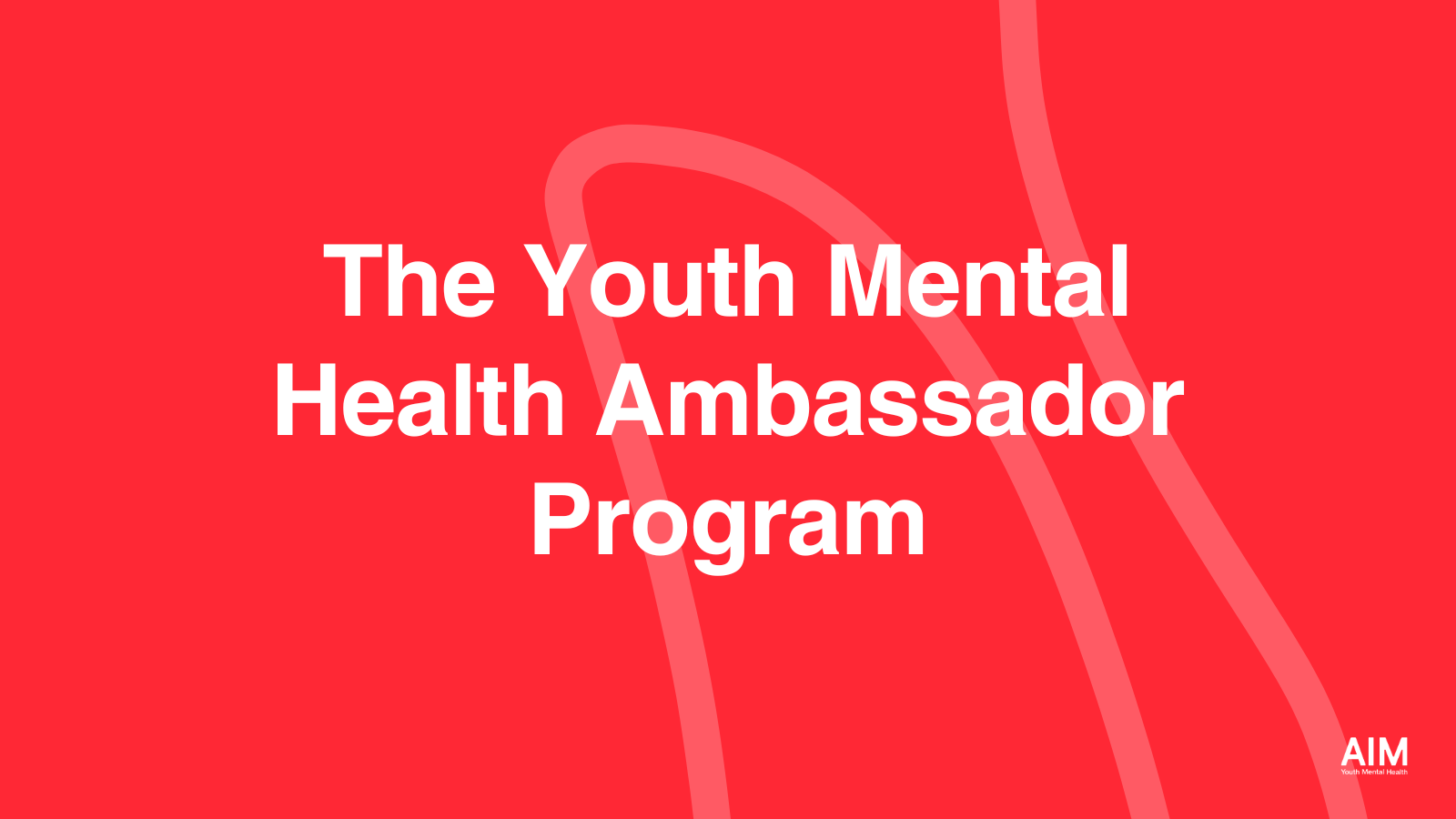By Meadowlark Monaghan, AIM Youth Advisory Board Member
Welcome to Research Updates! A new series where we share interviews with our doctors and fellows conducting groundbreaking research on all aspects of youth mental health.
Today, we chatted with AIM Clinical Science Fellow, Dr. Benjamin Johnson, who is currently conducting research on a smartphone application usage to predict suicide behavior in college students, and subsequently, provide them resources in real time when needed.
Dr. Johnson’s research study combines two aims:
- Apply machine learning to data to predict the emergence of self-harm urges and suicidality among young adults
- Provide resources (including some dialectical behavior therapy-based skills) to participants
The next phase of this study is intended to be a trial of a mobile intervention based on the results of the initial predictive study. The study will not only improve on current predictive models of young adult suicidal behavior, but also provide initial data on mobile, disseminatable, and scalable prevention efforts for young adult suicidality. Now, let’s hear from Dr. Ben!
_______________________________________________
Hi Dr. Ben! Please Tell Us About Your Study.
In this study, we ask young adults who have had self-injurious or suicidal thoughts or behaviors in the prior year to complete brief questions on their phones about their mood, relationships, self-esteem, and behaviors three times a day for three months.
Prior studies on self-harm and suicide have tended to either use questionnaires completed in one sitting, or those that have used smartphones to gather data more than once have only asked participants questions for about three weeks. However, even people who have had a history of thoughts of harming themselves often have days or even weeks where they don’t have these thoughts at all, much less self-injury or suicide attempts. For this reason, we wanted to do a better job of capturing those often infrequent moments when somebody thinks of harming themselves by asking our questions over a longer period of time.
Our study is intended to gather a lot of data for each participant so that we can actually move one step further in predicting self-harm and suicide by using advanced statistical approaches to predict for each individual participant when they themselves might be at most risk of having thoughts of self-injury or suicide.
What An Incredible Advancement To Be Able To Monitor Predictors To Subsequently Tailor Interventions To Each Individual! I’m Curious—How Did This Study Come About For You?
After I graduated undergrad, I worked for two years as a research coordinator at Emory’s Child and Adolescent Mood Program where we had a full-model dialectical behavior therapy (DBT) program for adolescents and young adults. One of my roles was to conduct assessments as kids entered the program and then 3 and 6 months later after they had been in treatment. I was constantly amazed by how much better some of these kids who had just had been discharged from the hospital after their third or fourth suicide attempt could get after just a relatively brief period of time in DBT. This inspired me to learn more about how to help people with borderline personality disorder (BPD) and who experienced thoughts of suicide and self-harm.
Specifically, a few years ago my graduate school mentor and I conducted an interview-based study where we brought into the lab over a hundred undergraduates with a history of self-harm. We asked them a number of questions about how, when, and why they engaged in self-harm, in order to better understand the context and motivations behind this behavior, particularly as it emerges in the college environment. This exploratory study laid the groundwork for my thinking around the current study, which aims to be able to use the information we gathered during our interviews (alongside a growing literature on predictors of self-harm and suicide) to assess the most relevant emotional, behavioral, and interpersonal variables to help us better predict the specific moments people think about self-injury or suicide. I’m hoping that, with the longer period of time we are asking our participants to complete questions on their phones, we will be able to develop tailored predictive tools–and then intervention strategies–to help each individual person based on the experiences that are most likely to contribute to their thoughts of suicide or self-harm.
How Exactly Does This App Predict Suicidal Behavior Or Self-Harm Urges?
The app we are currently using, developed by a company called MetricWire, is simply a tracking and data gathering tool. Three times a day we ask participants to complete questions on this app on their own phones about their mood, relationships, and behaviors. The goal is to use this data coupled with some advanced machine learning-based analyses to develop a prediction for each person in our study what is most likely to put them at risk–and when–for self-harm or suicidal thoughts or behaviors.
What Sort Of Intervention Would The App Provide If It Detects Such Behaviors?
Traditionally, interventions for suicide and self-harm provide individuals with general strategies to deal with distress or self-destructive impulses. For instance, these may look like recommendations to practice mindfulness daily or a list of 100 ways to distract oneself when distressed.
Though there is good evidence that these types of suggestions help, we want to take suicide prevention a step further and be able to tailor intervention techniques both to the specific triggers of each individual as well as to the specific moments they might be most at risk for self-injury.
For instance, imagine if person A in our study displays a pattern of having thoughts of self-harm only in the evenings on weekends after they have been drinking and when they particularly feel like they don’t fit in? Wouldn’t it be more helpful to have interventions targeting feelings of isolation that appear on the person’s phone on weekend evenings, rather than a general daily reminder to practice skills? That is the goal of the next step of this project.
Most Suicide-Prevention Training For The Community Follows A QPR (Question, Persuade, Refer) Model. Do You Find That This Sort Of Modality Is Being Translated Into Technology? What Have You Learned About Suicide Prevention Efforts From Your Research So Far?
Suicide prevention efforts can look very different depending on where in the “system” the person is. Approaches like QPR are very important when people interact with a friend or a coworker who has thoughts of suicide. I have used this approach myself with friends who have thoughts of suicide. When working with clients in therapy, the approach to intervening on suicide can look a little different and is more hands-on, ranging from teaching skills and having a client use “phone coaching” between sessions to practice these skills, to having an in-depth conversation about the function that is served by suicide and finding ways to make life a bit more tolerable so that suicide becomes a less-”needed” approach.
Technology can play a very important role not only in encouraging the use of healthy skills when we feel overwhelmed or like suicide might be a way out, and can also tap into our daily routines and (with wearable technology) our physiological patterns such that it can (hopefully) soon be tailored to the specific moments when we might need those reminders the most and tailored to the specific types of strategies best suited for each individual based on their own needs.
How Do You Feel Smartphone Applications Like This Can Be Supportive To Prevention Techniques And What Are Some Remaining Gaps?
I think smartphones have opened the door to two hugely important uses related to the prevention of suicide. First, which is what we’re currently doing in this project, gathering information on smartphones allows us such a more in-the-moment and accurate picture of what people’s lives, experiences, and behaviors look like in the real world. Second, smartphone applications are increasingly used to give in-the-moment skills and support to people in distress in their daily lives. This takes the idea in, for instance DBT, of “phone coaching” (where a patient may call a therapist for on-the-fly skills suggestions when in crisis) one step further since people can access skills and techniques everywhere they go, regardless of the therapist’s availability.
There are still a lot of gaps in using smartphone applications for prediction and prevention of suicide. First, we still don’t know what data is most useful to collect. Is it the person’s self-report of how they’re feeling? Or their social behavior (using GPS tracking)? Or their cell phone usage? Or their physiological reactivity (using wearables)? The more data we gather from these different domains, the better we’ll be able to know which specific variables and for whom to use when trying to understand self-harm and suicide in the real world.
Second, we haven’t gotten to the point of good “just-in-time” interventions for people with self-harm and/or suicidal thoughts and behaviors. Instead of just having passive skills and tools available on one’s phone, it would be a huge step forward if we could ping people with a suggestion when they need it most. We’re hoping to get a bit closer to this goal with our study!
What Is One Aspect Of Suicide Prevention You Wish Everyone Knew About?
Asking about suicide doesn’t cause people to kill themselves!
There is still this false belief that asking about self-harm or suicide will give people the idea to hurt themselves, which is untrue. Another thing people don’t realize is that often the hospital is not the best place for someone who is suicidal. Though of course helping prevent an acute suicide attempt may involve taking someone to the hospital, the risk for suicide attempt post-discharge goes way up (likely because it’s very stressful to come back to a stressful life after having “missed” a week or more of one’s responsibilities, relationships, etc.)
We need more efforts focused on the least restrictive care possible for our friends, family, and patients who consider suicide, such as DBT or other empirically supported (usually outpatient) treatments, which I think will also help reduce the stigma associated with self-harm and suicide by re-affirming that we need to treat people (including children and teenagers) with more respect and agency, even when they are considering suicide.
Asking The Question Does Not Plant The Seed! Thank You For Dispelling That Myth!
How Do You See Intervention Applications Like This Developing In The Upcoming Years?
I see the use of mobile interventions only increasing, both as adjunctive parts of existing forms of intervention (e.g., therapy) but also as a standalone approach to helping people around the world, especially if they don’t have access to other types of treatment or services. I hope that future mobile interventions are evidence-based and effective and can take advantage of how we all have phones in our pockets these days!
Is There Anything Else About The Research That You Want Folks To Know?
No, other than to keep supporting foundations like AIM and other private and public (e.g., government) programs that make important research on suicide assessment and prevention possible! Thank you!
______________________
About The Author
Meadowlark Monaghan (she/hers) is a consultant using her knowledge gained as a mental health professional to act as a liaison between brands, creators, + online communities with the field of psychology and mental health. She also co-hosts the personal development podcast, Thoughts May Vary. Her work has been seen with Madhappy, Local Optimist, The Mayfair Group, Lonely Ghost, AIM Youth Mental Health, NAMI San Diego and more.





